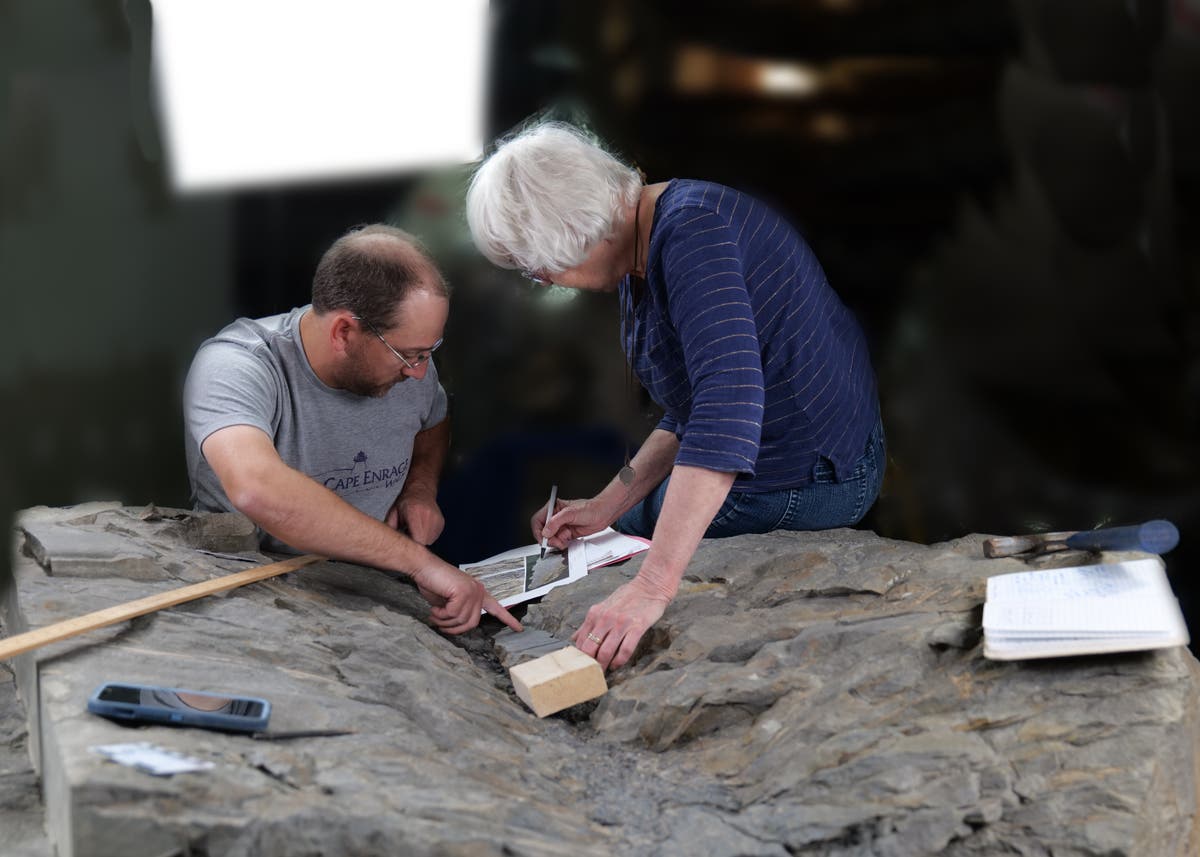
Scientists have discovered that trees dating back 350 million years look like “something out of Dr. Seuss’ imagination” and are “unlike any of those living” in modern times.
Research conducted on a species of fossilized tree called Sanfordiacolis from New Brunswick, Canada, has revealed a unique three-dimensional crown shape.
Tree fossils are usually preserved with only their trunks, however, in a pioneering study using a fossil from millions of years ago that preserved its leaves, scientists discovered that ancient trees have similarities to palm trees or ferns.
Researchers study the rare fossil
(Alan Graham)
“The way this tree produced very long leaves around its slender trunk, and the sheer number along the short trunk, is astonishing,” says Robert Gastaldo of Colby College in Waterville, Maine.
“We all have a mental concept of what a tree looks like, depending on where we live on the planet, and we have a vision of what is familiar.”
“The fossil we are reporting is a unique and peculiar growth form in the history of life. It is one of the experiments in evolution during a period when forest plants underwent biodiversification, a form that appears to be short-lived,” he added.
Sanfordiacaulis model with simplified branching structure for easier visualization
(Tim Stonecipher)
One sample revealed how the leaves emerge from the top of the tree, making it “absolutely unique.” Researchers say it is one of the few in a fossil record spanning more than 400 million years where a stem is preserved around which the crown leaves are still attached.
Another feature that makes ancient tree fossils stand out is the preservation of crown leaves.
“Any fossil tree with an intact crown is considered rare in the history of life,” Gastaldo said.
The tree likely relied on its unusual growth form to increase the amount of light it could capture and reduce its competition with other plants on Earth, the researchers reported.
They point out that the tree now represents the oldest evidence of young trees growing under a taller forest canopy.
This means that early Carboniferous plant life was more complex than expected, suggesting that Sanfordiacolis lived at a time when plants were “experimenting” with a variety of possible shapes or structures.
Sanfordiacaulis model with simplified branching structure for easier visualization
(Tim Stonecipher)
Scientists say they serve as a reminder that millions of years ago there were trees that looked unlike any we've seen before, and some of them appear to have come from the imagination of Dr. Seuss.
Professor Gastaldo said: “The history of life on Earth consists of plants and animals that are unlike any of those living today.
“Evolutionary mechanisms operating in the deep past led to organisms that lived successfully over long periods of time, but whose shapes, forms, growth structures, and life histories took different paths and strategies.
“Rare and unusual fossils, like the New Brunswick tree, are just one example of something that colonized our planet but was an unsuccessful experiment.”

“Web maven. Infuriatingly humble beer geek. Bacon fanatic. Typical creator. Music expert.”





More Stories
NASA Close to Deciding What to Do With Boeing’s Troubled Starliner Spacecraft
Scientists May Have Discovered ‘Dark Oxygen’ Created Without Photosynthesis: NPR
Real Scientists Lived on Fake Mars in a Texas Shed for a Year